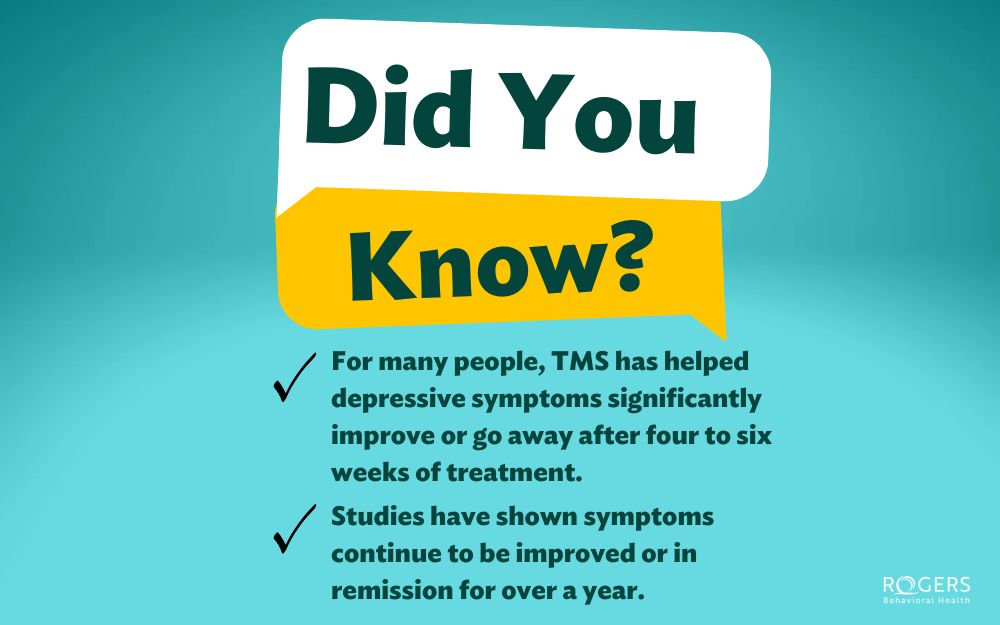What is TMS?
Transcranial magnetic stimulation, often referred to as TMS therapy, is an outpatient procedure used when other more traditional methods of treatment, such as antidepressant medications, have not been successful, tolerated, or provided sufficient relief.
When antidepressant medication has not been effective, TMS may be a suitable solution for those who have been diagnosed with major depressive disorder (MDD), anxiety symptoms in those with depression, and obsessive-compulsive disorder (OCD).
TMS has been shown to:
- Reduce depressive symptoms, with about 50% of patients seeing a significant decrease in symptoms.
- Reduce obsessive compulsive symptoms for about 57% of patients.
How does TMS work?
TMS uses a specialized electromagnetic coil that produces targeted magnetic pulses that stimulate a portion of the brain that is underactive in patients suffering from symptoms of depression, and/or OCD. The magnetic pulses used during TMS treatment strengthen the connections in the brain over time to improve the brain’s ability to adapt and change.
It’s important to note, however, that TMS should not be your only method of treatment. TMS treatment can help people improve consistency and gain benefits with attending therapy, eating healthy, and exercising.
What does TMS feel like?
After the coil is placed against the scalp, the machine makes a clicking sound as the pulses begin. Many describe it as a tapping sensation on your head. Some experience mild to moderate discomfort at or near the coil placement site. Treatment may be a bit uncomfortable at first, and some are more sensitive to it, but TMS is typically well tolerated.
How long do TMS treatments last?
A typical treatment plan involves sessions that take just under 20 minutes. They’re scheduled five days a week for six to eight weeks for a total of about 36 sessions, depending on how each person responds to treatment and other factors. The first treatment, called the motor threshold determination, is a longer appointment when the treatment team “maps” the brain to determine where the pulses will be directed and how much stimulation is needed.
Is TMS experimental?
TMS is not experimental. In 2008, the device used at Rogers was approved by the FDA as a treatment for major depression. More than 6.1 million treatments using this type of device have been performed in more than 169,000 people.
Is TMS like ECT (or electroconvulsive “shock” therapy)?
No, TMS is not like ECT. TMS uses magnetic waves similar in strength to magnetic resonance imaging (MRI). With TMS, you can drive yourself to and from each appointment, you are fully awake and alert during treatment and can resume daily activities immediately afterwards. ECT uses direct electrical current done while under anesthesia.
Can TMS help people reach remission from depression symptoms and how long can it last?
For many people, TMS has helped depressive symptoms significantly improve or go away after four to six weeks of treatment. Studies have shown symptoms continue to be improved or in remission for over a year.
You can read about how TMS helped Hannah in her battle against depression here.
TMS at Rogers
Rogers offers outpatient TMS treatment for people ages 15 and older. To find out if TMS is an option for you, call 800-767-4411 for more information or to request a free, confidential screening.


